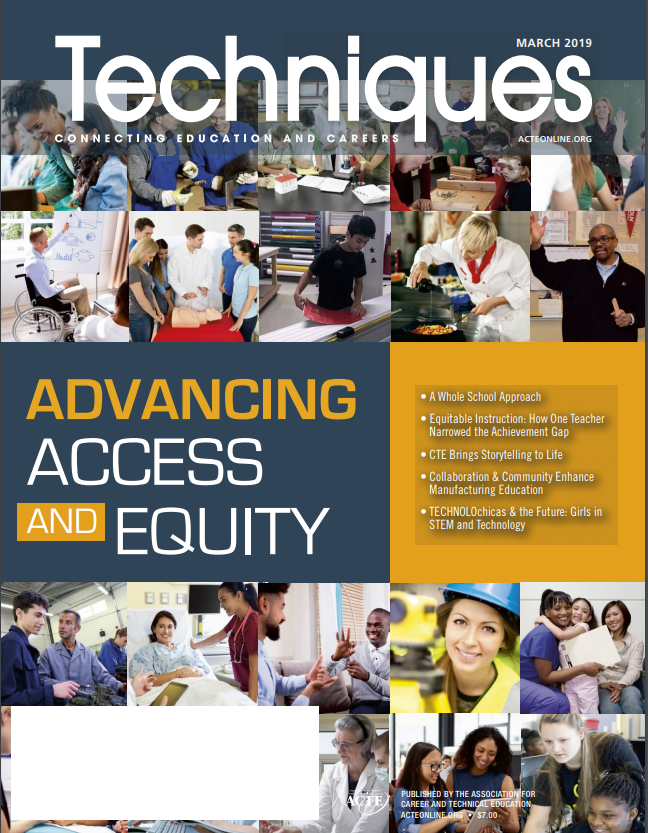The school year is wrapping up and you know what that means?! Summer reading season! Read Techniques. ACTE’s flagship publication addresses the issues ACTE members care about most, providing input you can trust when making decisions for your classrooms, programs and school systems — in print and on the web.
Articles published in Techniques are crafted to inspire and enrich the career and technical education (CTE) experience for all.
Find a comfortable spot in the shade and read Techniques.
In January 2019, business and community partnerships took center stage. Nicole Carter wrote “Colorado Partners Educate a Strong, Prepared Workforce.”
To meet the need for a more equipped labor force, communities, local businesses and national industry companies have come together to partner and support the growing requirement for skilled trades workers. …Widefield and Peyton School Districts purchased a 46,000-square-foot building known now as the Manufacturing Industry Learning Lab (MiLL) National Training Center.
Overall, the ultimate goal of the partnership is to promote a stronger and more consistent workforce in Colorado.
The February 2019 issue of Techniques focused on engaging students through CTE. In a centerpiece on career and technical student organizations (CTSOs), readers will “learn more about these nine organizations as they enhance student learning to address workforce development challenges and increase global competitiveness.”
A 21st century education for 21st century students
Dale Winkler and Scott Warren, of the Southern Regional Education Board, strongly recommend a whole school approach to increasing access and equity. Their article appeared in Techniques in March 2019.
We believe that career pathway programs that blend quality CTE and college-preparatory academics offer a way to increase readiness, postsecondary attainment, career advancement and economic stability for youth of all genders, races, socioeconomic backgrounds and ability levels.
States are using career pathways as an essential element of college and career readiness initiatives that satisfy the requirements of the Every Student Succeeds Act and Perkins V.
We made the case for family and consumer sciences in April 2019. With innovation at the forefront, Lori Wahl introduced fashion students to direct 3D printing on fabric. 3D printers are a versatile tool that can do more than print figures, parts and things. “While used predominantly for rapid protoyping and small-scale production of objects, 3D printing can also be used directly on fabrics to enhance the surface, dramatically change the appearance, or add a built-in feature.”
The future is bright! The future of career development, that is. Monica Amyett explored the important role of instructional coaching for CTE teachers in her article for Techniques in May 2019. “Quality teacher professional development is essential to the outcome of student achievement. In their careers, teachers must be challenged with new ideas in order to foster a classroom culture of student engagement that will lead to achievement.”
At the end of yet another school year, Techniques took a break.
Dear reader, will you share your experience from ACTE’s CareerTech VISION 2019? Leave a comment below. Techniques’ September issue gave association members a sneak peek at the innovative professional development to be undertaken in Anaheim, California. Consider Shannon Sheldon’s work on “Supporting the Gender Expansive Student.”
Students who blur the lines between masculine and feminine are considered to be gender expansive (Baum >amp; Westheimer, 2015; Murchison, 2016.) Pushing the boundaries of what is generally accepted as appropriate is not a new concept; at one time it was considered unacceptable for a female to wear pants to school.
But what about students who choose to express their gender outside of the norm? As educators, how can we make all students, regardless of gender identity or expression, feel welcome, included and supported in our classrooms?
October 2019 asked, “What is postsecondary success?” And our leaders in CTE answered.
Nzingha Williams, a fellow in the Postsecondary Leadership Success Program at ACTE – Sponsored by ECMC Foundation, wrote, “Postsecondary success is about the holistic success of the student and the institutions that serve them. Students come with a variety of different goals and aspirations. We must be able to help students achieve their goals. We also must be able to serve the economy and make sure that industries have enough skilled labor. True success comes when there is an intersection between our students, livable wage and economic mobility.”
California is stepping it up, shifting instructional focus from STEM to STEAM. So wrote Elizabeth McKinstry for the November/December 2019 issue of Techniques. Read more about how the Antelope Valley Unified School District has integrated art and engineering. “As the engineering students were tasked to train their classmates on equipment and use of tools, both groups improved their communication skills. Engineering students, typically focused on optimal and acceptable solutions, began to view their projects through a creative and emotional lens.”
Assessing the future of work
Ah, 2020. What a ride it’s been. The January issue of Techniques laid the foundation for developing effective work-based learning experiences. Consider the following from the Educational Development Center on “The Future of Work.”
A major transformation is taking place in America’s workplaces. The National Science Foundation calls it the Future of Work at the Human-Technology Frontier (Mervis, 2016) — a future that is driven by combinations of machine learning, artificial intelligence, the “internet of things” and robotics. Today’s students will need new sets of skills, knowledge and dispositions to succeed in workplaces. The CTE community is already giving students a head start in preparing for the future of work. But one key challenge involves predicting the multiple directions in which the workplace is heading and reconfiguring CTE to keep pace.
What has happened since the passage of the Strengthening Career and Technical Education for the 21st Century Act? What steps are being taken toward implementation? In February 2020, CTE professionals from around the country answered these questions and more. Heather M. Jones, a FACS teacher in Virginia, wrote, “Perkins V’s expansion to include middle grades CTE presents opportunities for those launching new initiatives and expanding existing programming. New funding streams create opportunities to reach more students earlier, educate them about future career options, and help dispel long-held myths about CTE in our schools and communities.”
A commitment to high-quality CTE
Data and Program Improvement is element No. 12 in ACTE’s Quality CTE Program of Study Framework. Gene Bottoms asserted our students’ voices are the key to program improvement. “Students can provide valuable insight into CTE courses. Consider the following data from surveys conducted on two groups of students. Their responses demonstrated that students can discern the type of rigorous CTE assignments that will prepare them for good jobs in the 21st century economy.” Read the March 2020 issue to learn more.
On land, out of this world… and in the watery depths as well. CTE offers opportunities for career success in and around the water. In April 2020, Techniques featured model programs in diverse pathways such as agriculture, STEM, health science, transportation and more. Emily Kuhn wrote “The Future of Hydroponics.” “To grow food (and economies) in and around cities, water-driven indoor farming methods like hydroponics are expanding rapidly, creating a favorable job outlook for students interested in what’s becoming an emerging industry of high-tech greenhouses, vertical farms, hydroponics and aquaponics.”
Learning is a lifelong process. In these unprecedented times, the traditional forms of instruction are being challenged. We’ve all been forced to rethink our strategy for teaching our students, and also for delivering quality professional development in CTE. While the majority of our May issue was developed prior to the COVID-19 pandemic, consider the following words from Nancy Trivette, ACTE’s board of directors president.
Our personal, social and professional interactions will be shaped as a result of the pandemic of 2020. Working, teaching and learning from home, just weeks ago, was uncommon for many of us. Today, as I write this, it is a reality for most, if not all of us. Everything we know, have done and will do in the future may be different. It is 2020, and our everyday lives have been reinvented and will continue to be reinvented at a speed that is hard to imagine. It is a time of change and a bit of uncertainty. However, it is also a time of great opportunity to change the way we teach, learn and do business! What will not change is the need for quality career and technical education.
ACTE members can read full issues of Techniques online.
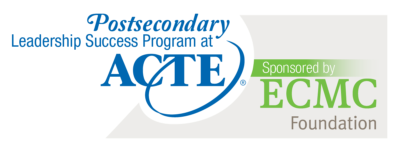
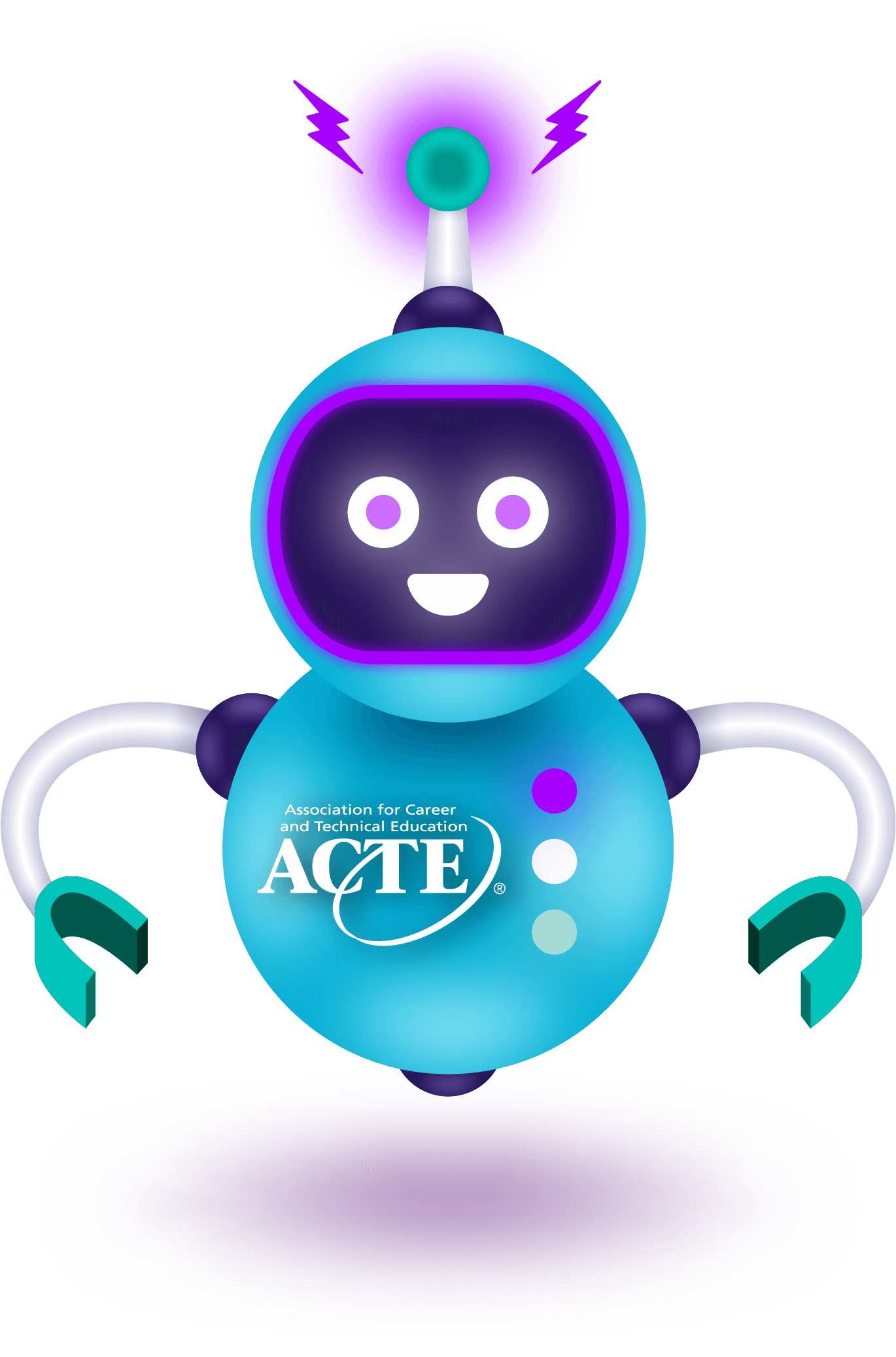


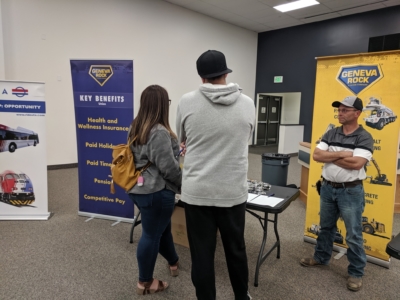 Twice a year, Geneva Rock awards a $2,000 scholarship for students currently enrolled in an accredited university, college, trade or vocational school in the pursuit of a construction-related career.
Twice a year, Geneva Rock awards a $2,000 scholarship for students currently enrolled in an accredited university, college, trade or vocational school in the pursuit of a construction-related career.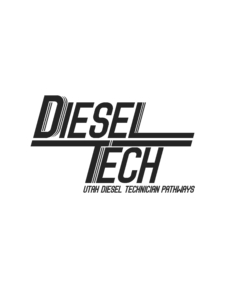 Working under the UDTP, under one singular logo, diesel tech companies showcase an understand of a common need. They all need technicians, and they must work together.
Working under the UDTP, under one singular logo, diesel tech companies showcase an understand of a common need. They all need technicians, and they must work together. concurrent enrollment courses stack into a one-year certificate or a two-year associate degree.
concurrent enrollment courses stack into a one-year certificate or a two-year associate degree.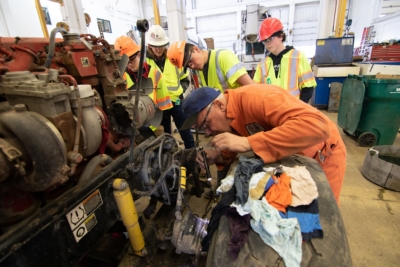 opened the door to industry. UDTP gives students the opportunity to interact with multiple companies in their area. They are able to make informed decisions about training for future careers.
opened the door to industry. UDTP gives students the opportunity to interact with multiple companies in their area. They are able to make informed decisions about training for future careers.
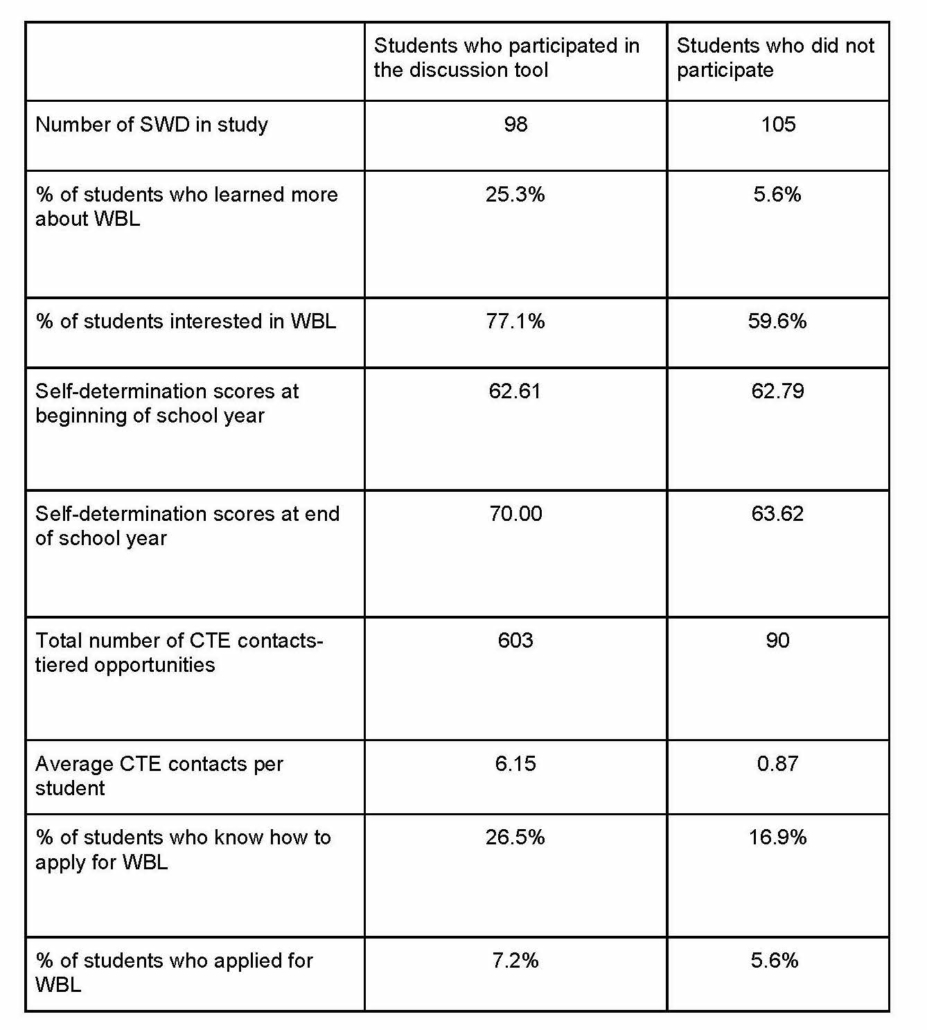

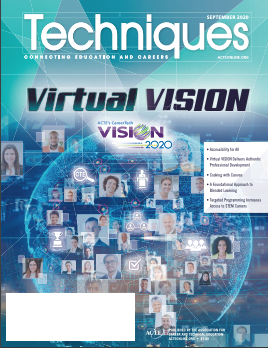
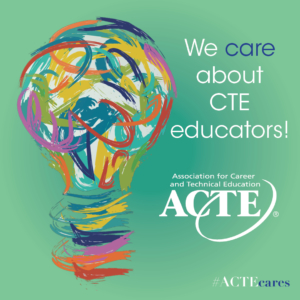 On social media last week, ACTE asked,
On social media last week, ACTE asked,